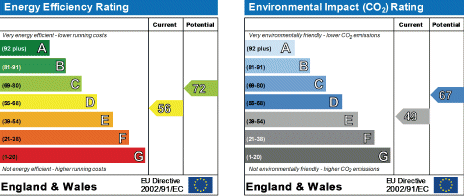 Energy Performance Certificates can be useful for working out how energy efficient a house is and how hard it is to heat them in winter. There are several opinions as to whether they accurately reflect the true nature of a house’s energy use and warmth.
Energy Performance Certificates can be useful for working out how energy efficient a house is and how hard it is to heat them in winter. There are several opinions as to whether they accurately reflect the true nature of a house’s energy use and warmth.
You need one before you can sell your house.
The main part of the certificate that people usually look at is the rating. This is from A-G and shows the current rating and what it could be if improvement work was done.
There are many flaws within the scheme – such as low energy lightbulbs are included in the rating – but obviously someone might take them with them when they move. However low energy bulbs are frequently on offer and even available free from energy companies.
Landlords need them for rental properties too and this can be helpful if you’re looking to move to an easy to heat property and cut your energy bills. Always make sure you ask to see the EPC. Letting agents and landlords should show it you without being prompted but if they don’t, then ask.
Some propertys can not be vastly improved. Buildings without a cavity can not have cavity wall insulation. In some areas window restrictions due to the area being a conservation zone might mean the cost of appropriate double glazed windows is too expensive.
Easy things like loft insulation and draft proofing can often make a difference though. The list of recommendations can be interesting. Some EPC are often based on guesswork which can be frustrating if they have assumed no cavity wall insulation but there actually is.
You should also have within this an estimate of bills and energy use.
There’s a summary of the home’s energy performance related features such as:
walls – whether they are cavity filled.
What type of roof it is and what insulation is had.
What type of floor is it.
What the windows are
What the main heating and it’s controls are.
Whether there is secondary heating.
What the hot water system is.
What the lighting is.
It should also state if there are any low or zero carbon energy sources. That’s things like solar hotwater or photovoltaic cells, or ground heat pumps, or wood burning stoves.
An energy performance certificate is worth looking at and checking the information on it yourself or asking a surveyor to check certain aspects.
